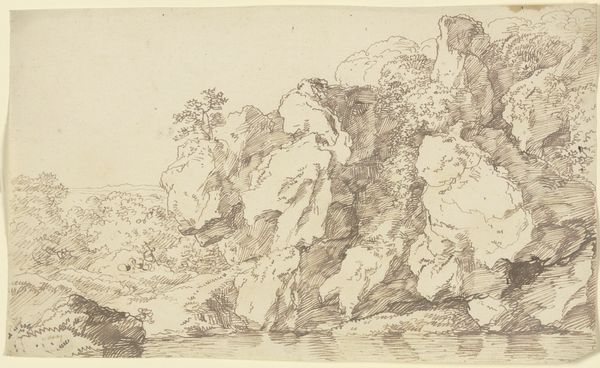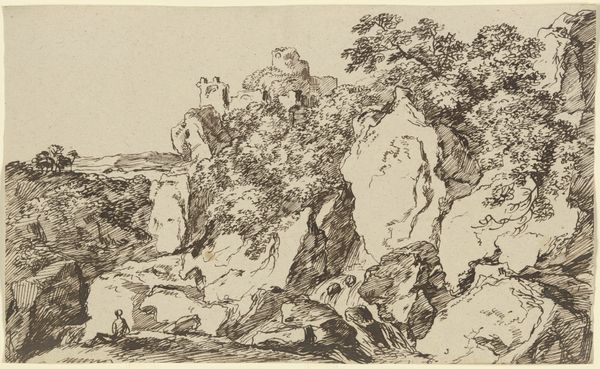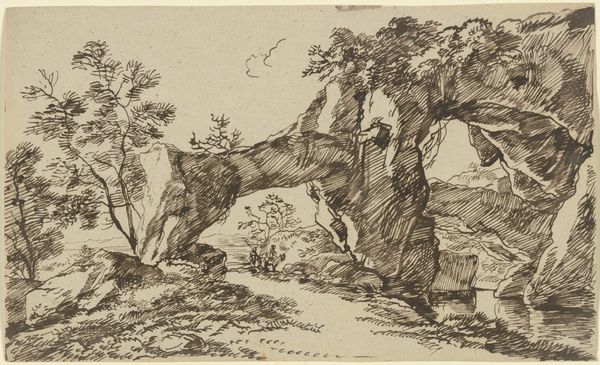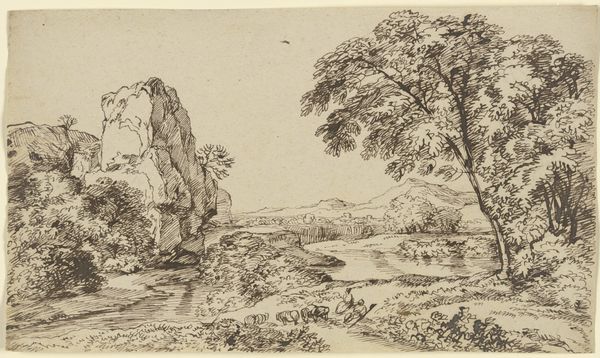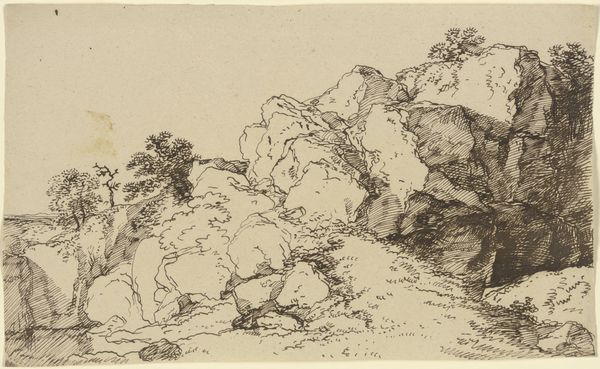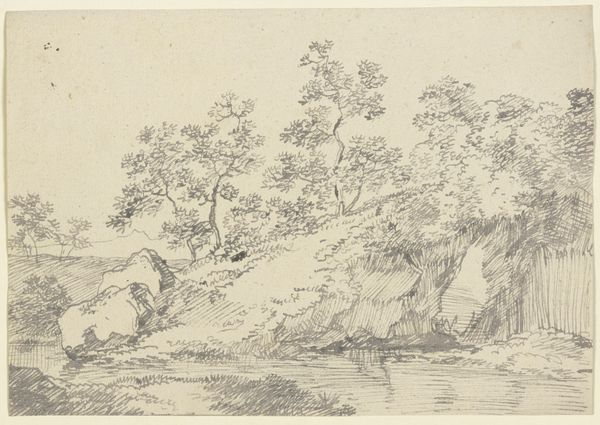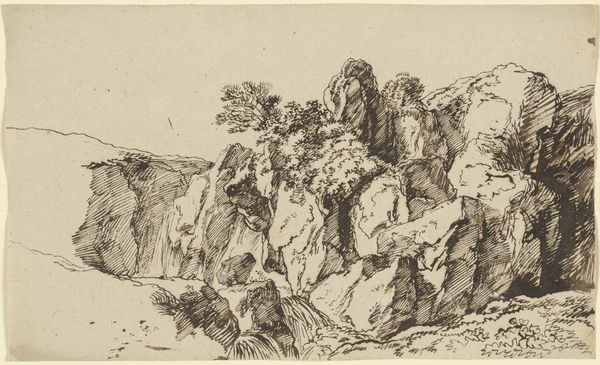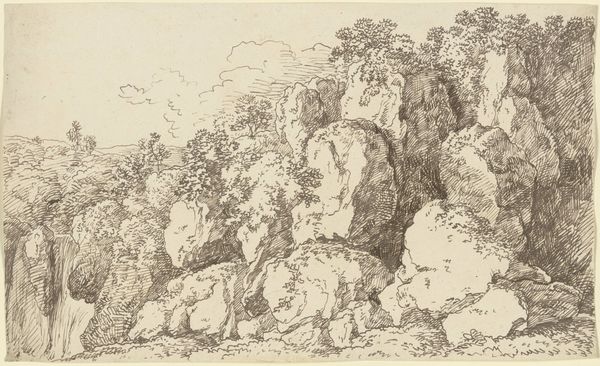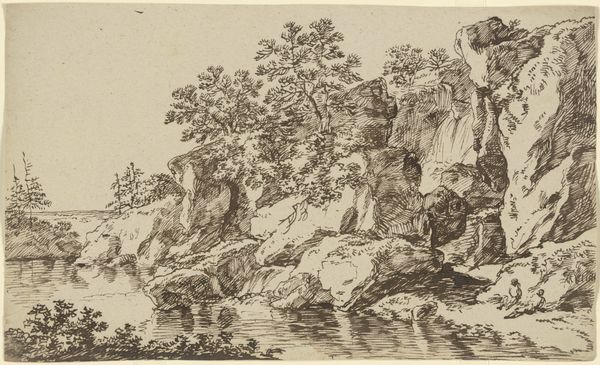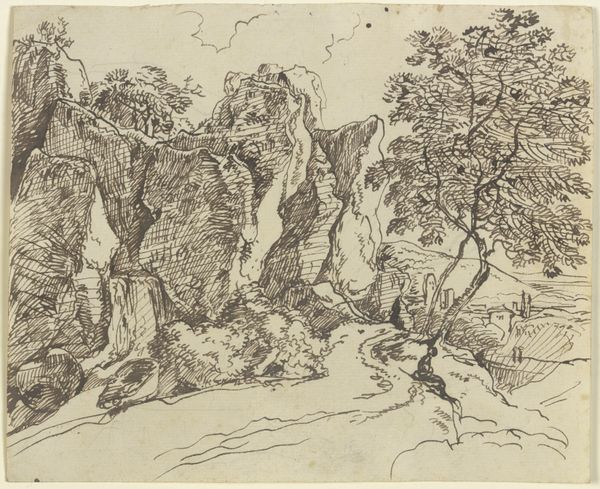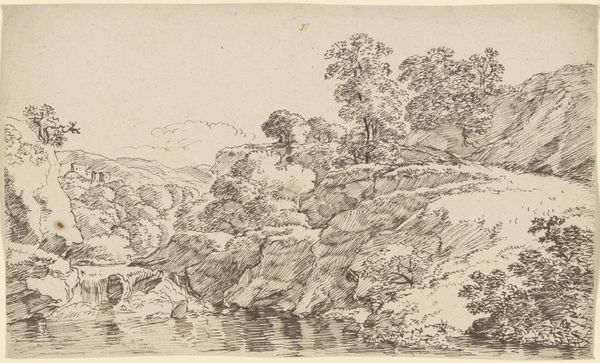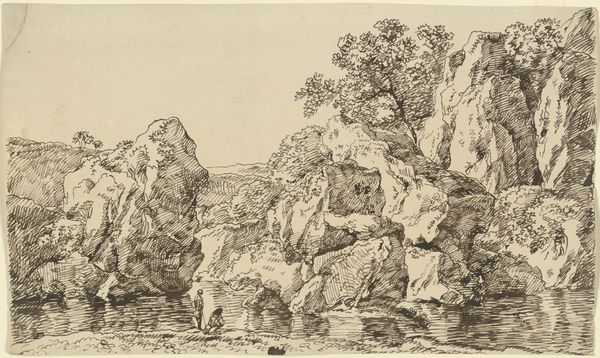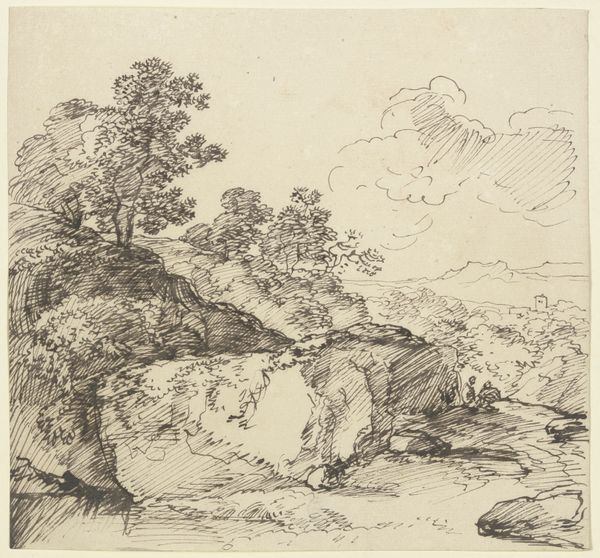
drawing, ink
#
drawing
#
landscape
#
ink
#
romanticism
Copyright: Public Domain
Curator: This is a work titled "Resting Before a Jagged Rock Formation," by Franz Kobell. It is currently held at the Städel Museum. Editor: There's such a raw, immediate energy to it, isn't there? The contrast between the fine, wispy lines and the almost aggressively scribbled shaded areas—it's compelling. It feels unfinished, but intentionally so. Curator: Indeed. Kobell's use of ink embodies the Romantic aesthetic. These landscapes often depicted man dwarfed by nature, contributing to the broader cultural narratives that emphasized feeling and emotion over reason during that period. Think of how landscape became tied to national identity and notions of the sublime. Editor: Absolutely. And if we focus on the means, the materials: Ink as a relatively accessible and portable medium allowed for capturing fleeting impressions directly from nature. How different this immediate kind of response would be to earlier eras of formal landscape painting completed entirely within the studio. The rough quality aligns with a rising trend towards authenticity and the value placed on individual experience. Curator: Yes, there’s an emphasis here on personal experience of nature. The figures are resting—contemplating the scene, perhaps? It invites us to think about the role of landscape in shaping identity. But I think to view art within the gallery means appreciating it in terms of its place and presentation history as a museum artefact. Editor: I’m fascinated by those figures huddled in the lower right, nestled right up against that jagged formation. It speaks of dependence but it also brings forward a tactile interest. Imagine how this rough rock felt! Were these resting people involved in manual work too? I also imagine Kobell sourcing and mixing inks with whatever implements available and finding inspiration outside academic structures, and beyond patronage networks. It makes it deeply personal. Curator: So, while you are interested in its physical construction and tactile details, I am left considering how Kobell situates humanity's relationship with nature against larger societal concerns of its time. What sort of landscape became emblematic and marketable to people from the era. Editor: In the end, I think it reveals something about art that manages to simultaneously engage with its medium, its moment, and still evoke something powerful today. Curator: I couldn't agree more; these types of work encourage us to continually reimagine our connection to the world that surrounds us and beyond.
Comments
No comments
Be the first to comment and join the conversation on the ultimate creative platform.
